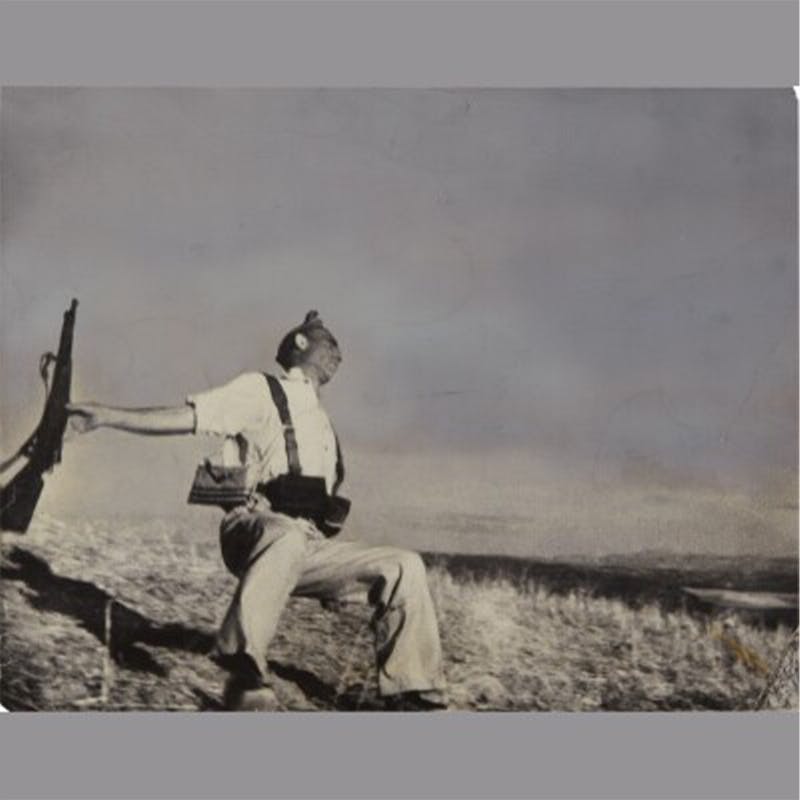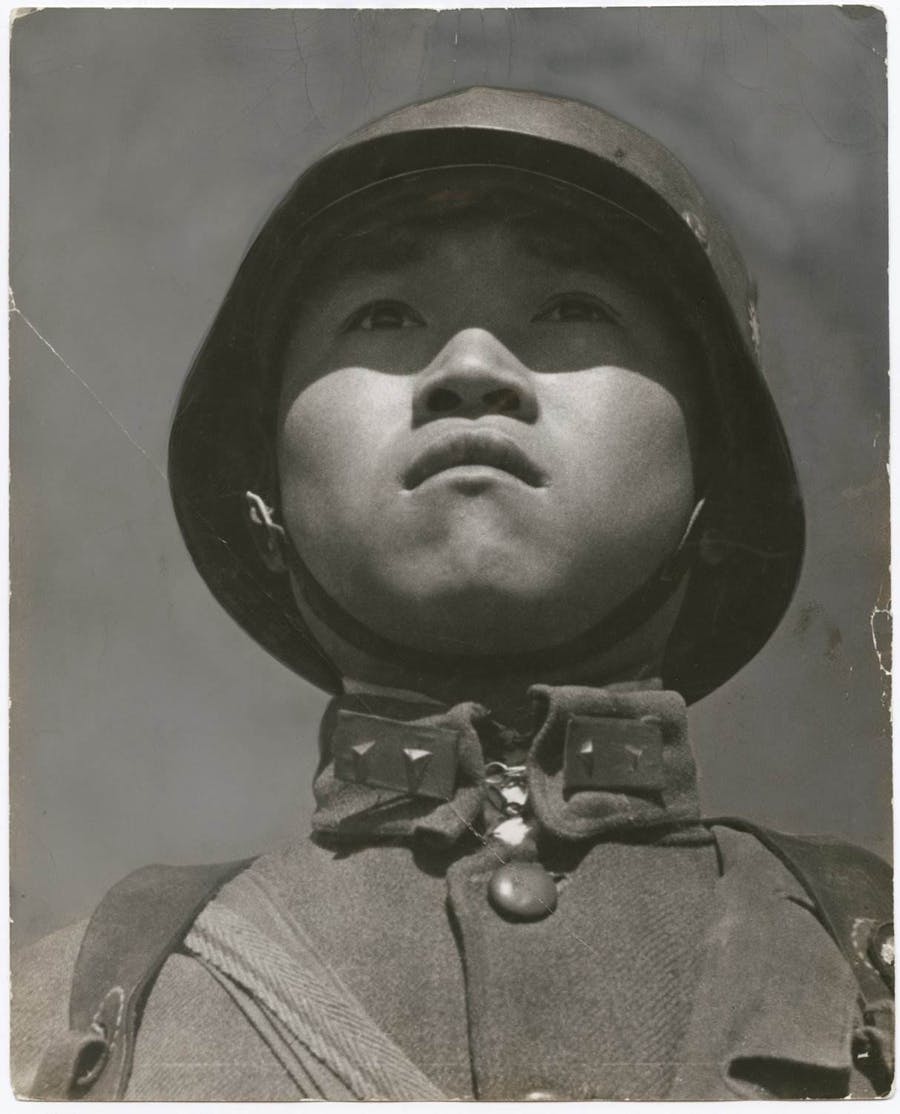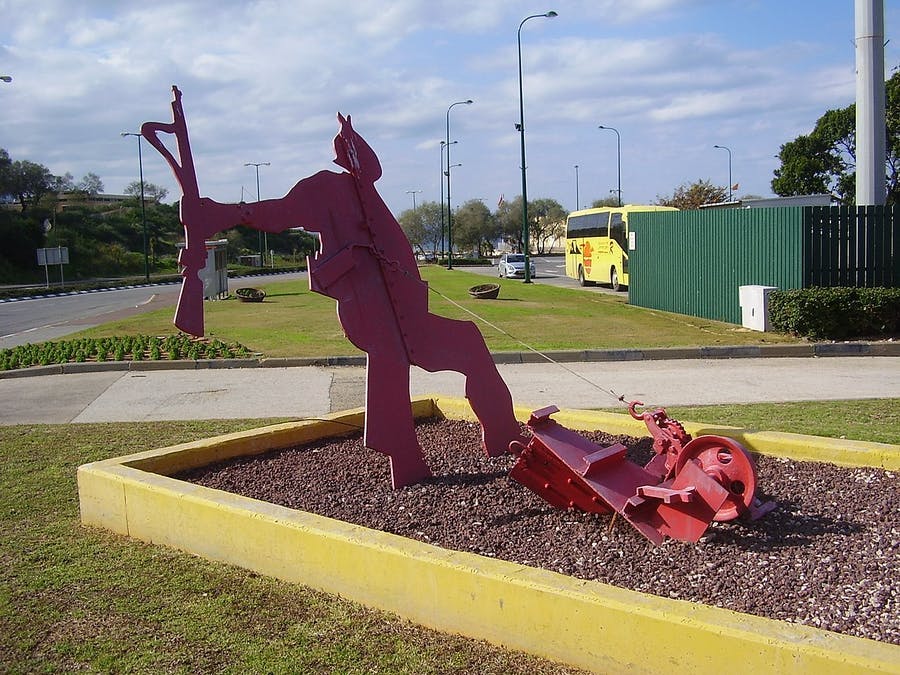Robert Capa: Photographs From the Front
The famous photographer covered two of the main wars of the 20th century, and his images captured the destruction and horrors of the battlefield like never before.
This sentence was quoted in LIFE Magazine and summarizes in a few significant words the meaning of Robert Capa's work as a war photographer. His Death of a Loyalist Soldier image, taken on September 5, 1936 and later published in LIFE, was printed numerous times with slightly different titles (Loyalist Soldier, Falling Soldier, Loyalist Militia and Death of a Militia Man) and is considered to be one of the best documentary photographs ever taken.

Capa took the shot during the Spanish Civil War while he was in the trenches with Republican soldiers. The photographer was deeply involved in the anti-fascist movement. In a 1947 radio interview, Capa described how Republican soldiers left the trenches to shoot the enemy with their old, obsolete rifles. To take the photograph, Capa didn't bother looking through the viewfinder, but instead held the camera high over his head and continuously pressed the shutter. The result was this shot that shows the precise moment of the death of a soldier on the desolate battlefield. The image is full of drama and movement, as it captures the soldier suspended in midair just before he falls to the ground.
Related: The 11 Most Expensive Photographers

Born as Endre Ernő Friedmann in Budapest on October 22, 1913, Robert Capa was a Hungarian-American war photographer and photojournalist. He is considered by many to be the greatest combat photographer in history.

In 1938 Robert Capa went to the Chinese town of Hankou, now part of the Wuhan territory, to document the resistance to the Japanese invasion. He later sent his pictures to LIFE, which published a selection in the May 23, 1938 issue.
Related: Peter Beard: Into the Wild
Another important group of images was known as "The Magnificent Eleven," taken by Capa on D-Day, when he was assigned to the 16th Infantry Regiment, 1st Infantry Division ("Big Red One") in Omaha Beach, Normandy. These photos were published by LIFE on June 19, 1944.
Want more articles like this straight to your inbox? Subscribe to our free newsletter here!

His other well-known shots are To invade, with a newspaper clipping recalling the fighting in Normandy during World War I, and Snowy field, published in LIFE in January 1945, which shows an American soldier cautiously advancing through a snowy field to where a Nazi fighter lies. The soldier keeps the weapon ready for use, not yet knowing for sure if the other is alive or dead.
Related: Picasso on the Beach: Idyll Immortalized
In 1947, together with Henri Cartier-Bresson and others, Capa founded the Magnum Photos cooperative in Paris, which became the first freelancer photographer agency.

His bravery and passion for photography, however, led him to his death at the age of 40. On May 25, 1954, during the First Indochina War, he accidentally stepped on a mine in Vietnam while photographing a column advancing in a particularly dangerous area and lost his life.
The enormous impact that Robert Capa has had on photography cannot be underestimated. His iconic photography showed the horrors of war from the trenches, instead of from far away, and redefined the future of war, and documentary, photography.


